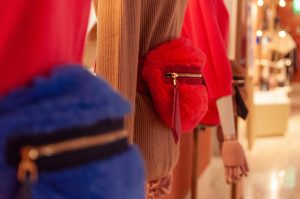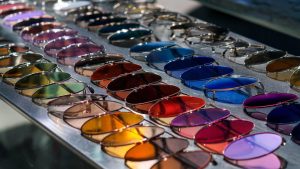The humble jeans have changed the fashion industry to the point where their iconic impact influenced songs, movies, and pop culture eras.
As young ones, we aspired to own a pair of Levi’s 501 jeans. They were the hallmarks of finally being part of the cool kids club.
Everyone has a pair of jeans, and the global fascination will always remain. But have you ever wondered how they go from a cotton field to your closet?
But have you ever wondered how they go from a cotton field to your closet?
Turns out, there’s a lot more to your denim than meets the eye.

From Threads to Trends: How Your Jeans Are Made
It All Starts With Cotton
Jeans begin their journey on a cotton farm. The cotton industry is a major player in the U.S., producing over 18 million bales annually, with Texas leading the charge.
Cotton fibers are harvested, cleaned, and spun into yarn. This raw material is the foundation for denim.
However, there’s a twist: the impact. Traditional cotton farming is water-hungry and often involves pesticides.
Some denim brands are shifting to organic or regenerative cotton to reduce their footprint.
Dyeing for That Classic Blue
Once the cotton is spun, it’s time to get that iconic indigo color. The magic ingredient? Indican.
National Geographic describes it as a compound found in the leaves of indigo plants. Through chemical reactions and fermentation, indican transforms into the rich blue dye we know and love.
While traditional dyeing methods require vats of water and chemicals, newer, eco-friendly methods are coming to the fore.
Some companies are trying out digital printing and eco-friendlier dyeing methods to cut down on waste and pollution.
Weaving the Denim
After the yarn is dyed, it’s woven into denim using a twill weave. That’s what makes jeans tough and gives them those cool diagonal lines.
Vintage-style jeans often use shuttle looms to produce selvedge denim – a tighter, more durable fabric.
Brands focus on preserving these old-school methods for that authentic, lived-in look. For instance, many use vintage zippers and trims to add to the distressed appearance.
Cut, Sew, Stitch: Bringing Jeans to Life
Next up is the cutting and sewing stage.
Denim fabric is cut into pattern pieces that make up your jeans: front and back panels, pockets, waistband, and belt loops. Skilled workers or automated machines then stitch these pieces together.
Zippers, buttons, and rivets come next. These high-quality items stand the test of time. Although the small components might seem insignificant, Talon International Inc. says they’re key to durability and style.
Wash, Distress, Repeat
Now comes the part where jeans get their personality. Stone washing, sandblasting, and enzyme treatments help achieve that broken-in look.
However, traditional finishing methods can be rough on the environment. Modern alternatives like laser distressing and ozone washing offer a greener way to get that vintage aesthetic.
Marc O’Polo, for instance, uses eco-wash technologies that dramatically cut down on water and chemical use.
From Factory Floor to Fashion Statement
Finally, the jeans get a once-over, have their tags added, and are sent to stores.
Their story doesn’t end there.
Once they’re on the shelves, it’s up to you to make them your own: cuffed, distressed, oversized, or skinny.
Every crease and fade tells a story. Your jeans grow with you, becoming a comfy timeline of everyday adventures.
The Environmental Cost
The Green Climate Fund says it can take up to 3,781 liters of water to make a single pair of jeans, plus a lot of energy and chemicals.
No surprise, that’s got people thinking. Presently, the denim world is buzzing with fresh ideas and smarter, more sustainable methods.
From waterless dyeing to cool tech like NextPrinting’s digital printing, the future of jeans is getting a major makeover.
Brands are also jumping on the circular fashion trend by turning old jeans into new fabric and designing denim that’s easy to take apart and reuse.
What Can You Do?
Being a conscious consumer doesn’t mean giving up your denim obsession. Here are a few friendly tips:
- • Buy quality over quantity. Invest in jeans that last longer and wear better.
- • Look for sustainable brands. Seek out companies that use organic cotton, eco-friendly dyes, or recycled denim.
- • Wash less. Spot clean when you can and air dry instead of tumble drying.
- • Recycle or donate. Don’t toss your old jeans – give them a second life.
The Final Stitch
From seed to stitch, the journey of your jeans is full of science, style, and sustainability challenges.
Knowing what goes into your beloved pair makes you a more informed shopper and lets you appreciate the craftsmanship behind every thread.
The next time you slip on your favorite denim, remember: you’re not wearing a trend; you’re wearing a story that started long before you swiped your card.

fashionabc is a fashion technology platform, comprising a digital directory and various other digital tools and supply chain solutions for the fashion industry ecosystem, that focus on ethical fashion and sustainability. We are building inclusive digital transformation tools for fashion professionals who are willing to take steps towards a more sustainable ethical fashion industry, by adopting AI and DLT blockchain technology.
* building digital profile and IP solutions for fashion businesses
* tackle issues such as provenance and counterfeit in supply chain
* contribute to the construction of a meritocratic ethical fashion industry which is certified and part of the circular economy










